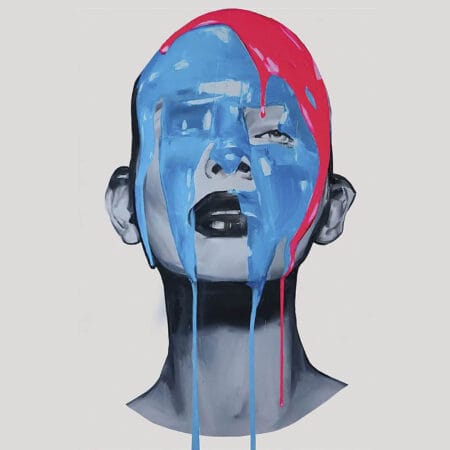The fusion of aesthetics and functionality in architecture is a sensitive balance that has fascinated architects, designers and lovers of beauty all over the world throughout history.
Architecture is much more than just building buildings; It is about creating rooms that interact with human emotions and satisfy practical needs.

In this article we will deal with the relationship between aesthetics and functionality in architecture, the question of how innovative house designs unique and memorable spaces bring to life, and how art becomes an important part of user experience in buildings and rooms.
The fusion of aesthetics and functionality in architecture
From ancient Greek temples to modern skyscrapers, architecture is a testimony to the development of design and technology. In every era, however, it was important to reconcile aesthetics and functionality.
Architects not only try to create beautiful buildings, but also spaces that fulfill their purpose and improve the quality of life of the people who live or visit them. Due to the symbiosis of aesthetics and functionality, a building can not only be visually appealing, but also efficient and comfortable.
Innovative design: create unique and memorable rooms
Innovative design is the key to creating architectural spaces that are liable to remember people. A creative approach not only includes the creation of unique forms, but also the inclusion of new solutions for design challenges.
Architectural innovation can manifest itself in the choice of materials, manipulation of light and space and research into new technologies. Buildings such as the Opera House in Sydney (Australia) and the Guggenheim Museum in Bilbao are paradigmatic examples of how innovative design can convert a city and inspire the world.

Dietmar Rabich / Wikimedia Commons / “Sydney (AU), Opera House-2019-2280” / CC BY-SA 4.0

Irene_07, CC BY 2.0, via Wikimedia Commons
The importance of art for the user experience of buildings and rooms
Art is not only an aesthetic expression, but also a powerful instrument for enriching the experiences of those who interact with a room. Artistic elements in architecture can affect the mood, direct perception and give a place a feeling of identity.
A colorful murals in a hospital can improve the atmosphere and the attitude of patients, while a sculpture in a park can invite you to think and contemplation.
Basically, art in architecture is not just a beautification, but a form of communication between the designer and the user.
Strategies for the integration of artistic elements into architectural projects
The successful integration of artistic elements into an architectural plan or a project requires careful planning and a thorough understanding of the context. The architects must take into account the relationship between art and functionality, the coherence with the overall vision of the project and the interaction with the environment.
The selection of artists and the process of cooperation are crucial for a harmonious fusion of architecture and art. From the integration of mosaics on facades to the installation of light works inside, there are numerous strategies to integrate art into architecture.
The floor plans play an important role in this because they enable the spatial arrangement and represent the basis for the placement of artistic elements.
Successful collaborations: Architects and artists work together
The cooperation between architects and artists has led to some of the most famous works in history. The combination of different skills and perspectives can lead to unique projects that question conventions and create new aesthetic paradigms.
The Mexican wall painter Diego Rivera and the architect Juan Sordo Madaleno created the famous Hotel Rivera in Mexico, in which architecture and art merge into an unforgettable synthesis. This cooperation not only enriches the aesthetics of the buildings, but also expands the creative horizons of the two disciplines.
Contemporary trends in the inclusion of art into architecture
Today, the relationship between art and architecture has developed into new directions. Digital technologies, online space planning and augmented reality have enabled the creation of immersive experience, in which art is surprisingly integrated into architecture.
Sustainability and the use of recyclable materials have also influenced the way art is integrated into architectural projects. Sustainable architecture not only aims to minimize the effects on the environment, but also to appreciate the natural beauty and to convey a message of respect for the environment.
The economic and cultural value of artistic architecture
Artistic architecture has a significant impact on the economic and cultural value of a region. Calculated buildings often become landmarks and tourist destinations that attract investments and create jobs.
In addition, these buildings can become cultural symbols that reflect the identity of a community. A clear example is the Eiffel Tower in Paris , which has become a global icon and a cultural landmark of France from a controversial building.
Conclusion
For the successful marketing of artistic architectural projects, it is essential to stand out in the industry. Visual presentations, models and digital representations play a crucial role in presenting the artistic vision towards investors, customers and the public.
The marketing strategies should highlight both the aesthetic beauty and the functionality of the project and emphasize how art enriches the user experience and increases the value of the property. The use of spatial planner software can help to convey the ideas even more clearly.

Owner and managing director of Kunstplaza. Publicist, editor and passionate blogger in the field of art, design and creativity since 2011. Successful conclusion in web design as part of a university degree (2008). Further development of creativity techniques through courses in free drawing, expression painting and theatre/acting. Profound knowledge of the art market through many years of journalistic research and numerous collaborations with actors/institutions from art and culture.


















